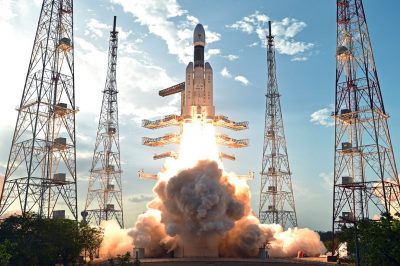India’s recent surge in space dominance initiatives, including the launch of Chandrayaan-3, has sparked a crucial debate over its implications for Pakistan’s security and the overall strategic stability of South Asia.
India’s rapid technological and economic progress has allowed it to invest significantly in outer space, gaining an edge in communication, navigation, surveillance, and reconnaissance programs.
However, these advancements pose a serious threat to the balance of power in South Asia, particularly as Pakistan’s economic limitations hinder its ability to keep pace with such technological progress. Even with China’s assistance, Pakistan struggles to maintain this balance.
Although Indian officials have maintained that their space dominance programs are for peaceful purposes, such as discovering minerals and strengthening communication through satellites and navigation, there is a persistent threat of hidden agendas like surveillance and reconnaissance.
Soft Power Dynamics and Global Perception
First, space dominance enables India to have advanced satellites that aid intelligence gathering, high-resolution imagery, and surveillance of Pakistan’s military activities. India has also developed its Anti-satellite system, which can attack and damage other satellites.
Secondly, the satellites enable India to develop precise targeting capabilities to target Pakistani military sites from space. To counter these initiatives, Pakistan needs to resort to the effective immediate implementation of the United Nations Office for Outer Space Affairs (UNOOSA) Liability Convention, which holds the other country liable in case of damage caused to space objects.
Through these advancements, Pakistan is susceptible to monitoring its agricultural activities, and India can constrain the water flow of Pakistani fields by monitoring the crop conditions more precisely. These measures are crucial for the maintenance of space sovereignty.
In addition to its technical advantages, India has also received international recognition and is imbued with prestige over its successful moon landing. This casts a shadow on Pakistan’s already deteriorated image as politically unstable and economically fragile.
At international forums, Indian officials and diplomats have ignored interaction with Pakistani officials to portray Pakistan in a negative light and maintained the stance that they perceive Pakistan as a terror-sponsoring state.
Now, the lack of Pakistan in technological and economic fields further portrays Pakistan as a failed state or a weak state. There is an immediate need to take brisk action to subtly recover the soft image of Pakistan by focusing less on military operations and developing a positive research environment, particularly in space-based activities.
Some satellites like the Satellite Launch Vehicles SLV-3, can be used as Intermediate Range Ballistic Missiles. Such technologies can trigger an arms race in South Asia as Pakistan and China both will look forward to deploying more weapons in outer space to counter India’s space weapons.
India possesses the remote sensing satellite which is ostensibly used for peaceful purposes but can easily be used for spying purposes as well.
In addition, the INSAT is a multipurpose satellite that can carry out telecommunication, meteorological services, and broadcasting facilities from a single geostationary platform. These features imbue India’s space program with a more efficient communication system in case of conflict.
However, all these technological advancements provide Pakistan’s military a prerequisite. The purpose is to invest in a better munition to be used in space and enhance satellite communication technologies. Pakistan can divert its resources and research from the more difficult nuclear weapons to the relatively peaceful space technology.
However, on the brighter side, this space program can also prompt Pakistan’s SUPARCO. To invest in space-related technology and encourage research and development in space technologies to compete with India’s ISRO. This will have a positive impact on Pakistan’s technological fields.
India’s increasing influence in space can compel Pakistan and China. To ally and share the technological and military know-how to combat the Indian presence in space. The two countries can also enhance friendship by carrying out study exchange programs. Also, workshops that discuss the benefits of joint space exploration programs.
Promoting Technological Advancements and Peaceful Use of Outer Space
The space race has shifted the center of attention from the nuclear arms race to the space race. Which is helpful for both countries. Instead of viewing this situation as a threat. Pakistan can take this as an opportunity to promote healthy competition and revive SUPARCO. Use it for directions and communication purposes, if not for the launch of weapons.
Given the recent developments, the trajectory of an arms race in the region is set to change. The broader implications of this space race will impact the balance of power in South Asia and prompt neighboring countries to invest in space technology.
At this critical juncture, the practical implementation of laws that promote the peaceful use of outer space, such as mineral exploration, communication, and satellite navigation, is of utmost importance. The UNOOSA must step up and play an active role in ensuring the peaceful use of outer space, thereby preventing this space race from taking a detrimental turn.
** The opinions expressed in this article are solely those of the author and do not reflect the views or position of World Affairs Insider. The organization neither endorses nor takes responsibility for the content of this article and its accuracy.

International Relations student with solid academic basis in Diplomatic Relations, International Law and Intercultural Communication. Her writings focus on international relations, feminism and current trends.







